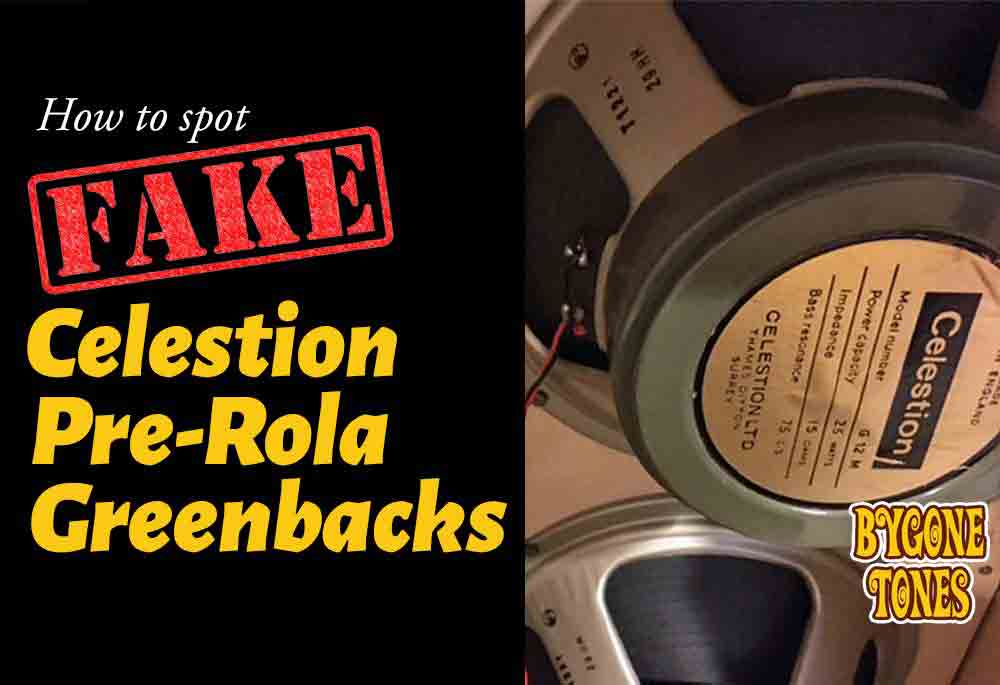
Unfortunately there is a lot of fake and ‘lashed-up’ vintage gear floating around on the used market. Most of which can be traced back to one notorious dealer in UK.
In this blog post I will be going over a few basic pointers for identifying dodgy pre-rola period speakers. Hopefully this will prevent a few people from getting stung.
Why Bother Faking Vintage Celestion Speakers?
You are unlikely to see fake pre-rolas for sale on their own. It is far more lucrative for dealers to make or ‘lash-up’ an entire vintage Marshall speaker cabinet or combo amplifier. The speakers are just a small part of that, and would be doctored to suit the gear being faked.
For example, a non-valuable speaker model – lets say a T1614 from 1972, might be turned into a much more sought after T1221 from 1966, then fitted into a fake 1966 Marshall bluesbreaker amp. A ‘holy grail’ amp for Marshall collectors, and very valuable.
Spotting fake speakers inside vintage Marshall gear is an important warning sign to avoid buying that particular amp or speaker cabinet, and tells us quite a lot about the seller too. They are either clueless about the gear they are selling, or dis-honest. In my experience most dealers will plead ignorant when you query this stuff. Either way, its a good idea to blacklist the seller and take your business elsewhere!
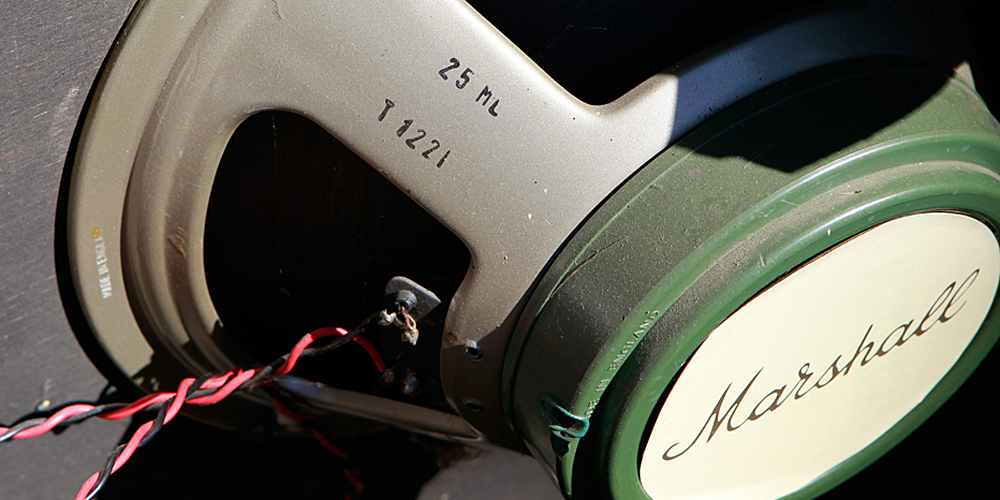
The main hotspot for fake Marshall gear is the pinstripe period: mid 1965 to early 1968, and therefore this is the period of Celestion speakers we need to be most vigilant about.
The rest of this blog post will focus on the small details we can use to identify fake speakers. Fairly tedious and nerdy sorry. Leave now if this freaks you out, but it is the only way I can do it.
Fake Ink Stamps
A dodgy looking ink stamp is often the biggest clue that a speaker has been modified.
Incorrect Stamp Location
All genuine ‘greenback’ style speakers made before April 1968 had their date codes printed on the front gasket of the speaker.
Fake date codes supposedly from this same period will often be printed on the chassis leg instead:
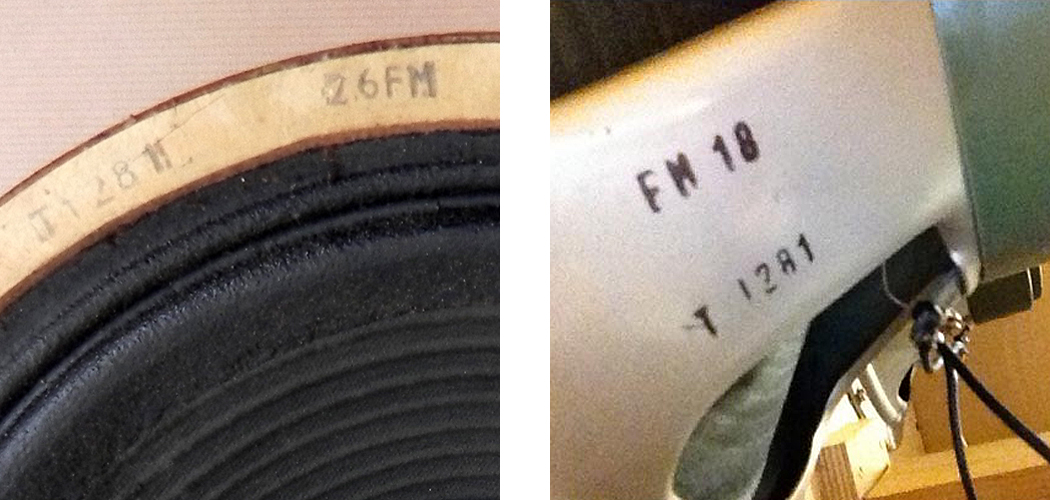
Fake 1968 Date Codes
From April 1968 onwards, genunine ink stamps were printed on the chassis leg instead of the front gasket. Look out for the following incorrect details on speakers supposedly from 68:
- Vertical print. From April 68 to Dec 68 Celestion usually stamped their date codes horizontally on the frame.
- Black ink. Celestion only started using black ink on the frames from about mid 69 onwards, before this it was usually grey.
- Missing circular stamp. The circular quality control stamp will always be present on a genuine speaker. It is missing on most of the fake speakers I have seen, but not all.
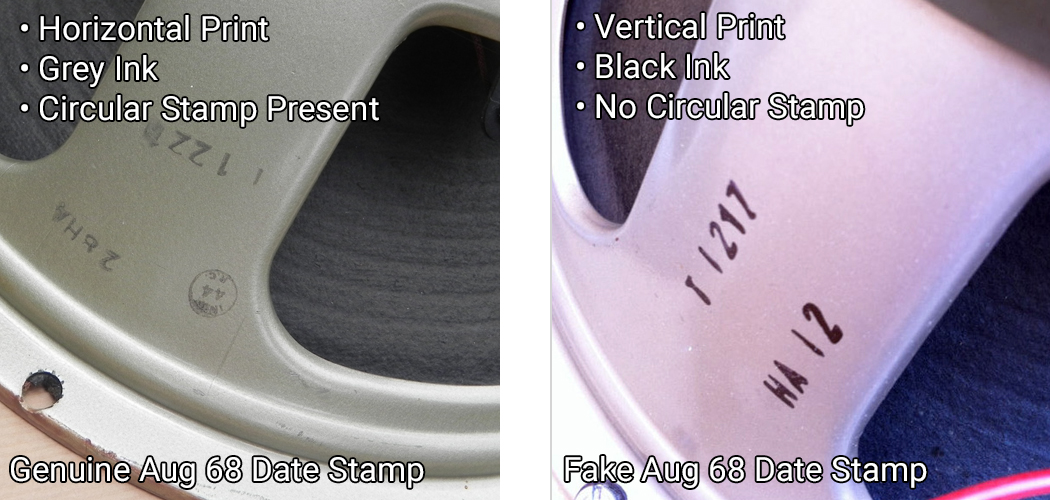
Those with a good eye might also notice the font used for the fake stamp is a bit slimmer and taller looking than the genuine one.
Premature inspection letter
From the beginning of 1969 to late 1976 Celestion included an additional ‘inspection letter’ with the date code. For example you might find the date code ‘GB17 Y’ with the ‘Y’ being the inspection letter.
Some fake date codes include the inspection letter way too early, such as with a 1967 or 1968 date code. Somebody recently showed me a 1968 date code with the model code ‘T1281 Z’ next to it. Pretty wierd looking, and I would love to add the photo here but the owner would not give me his consent to use it.
Wrong Chassis & Solder Terminals
Celestion used two main types of chassis; the ‘one tab’ and the ‘four tab’.
The earliest I have seen the four tab chassis is May 69 (EB date code) on the Vox silver alnico. On greenback speakers I have not seen it any earlier than July 69 (GB date code). It has a ‘tab’ on all four sides, and a small cutout at the sides of the solder terminal:
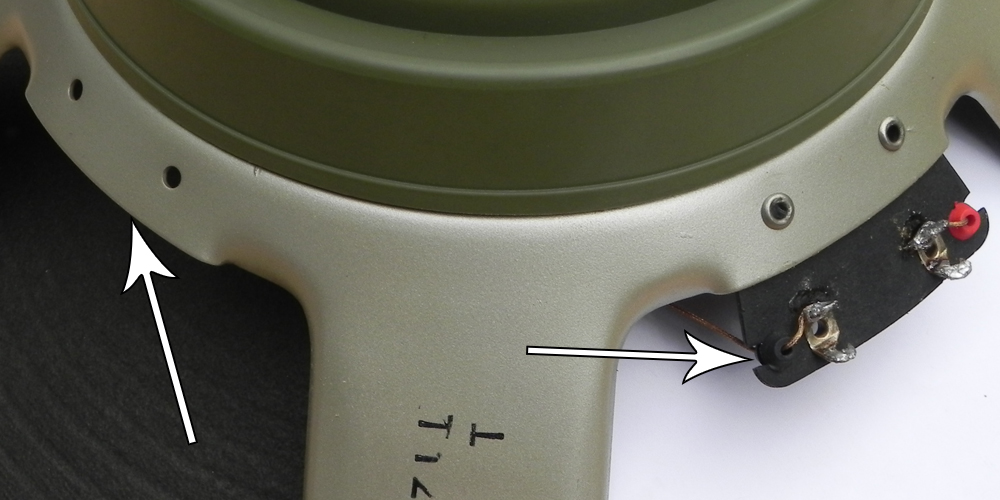
The earlier one tab chassis does not have the extra tabs or the solder terminal cutouts:
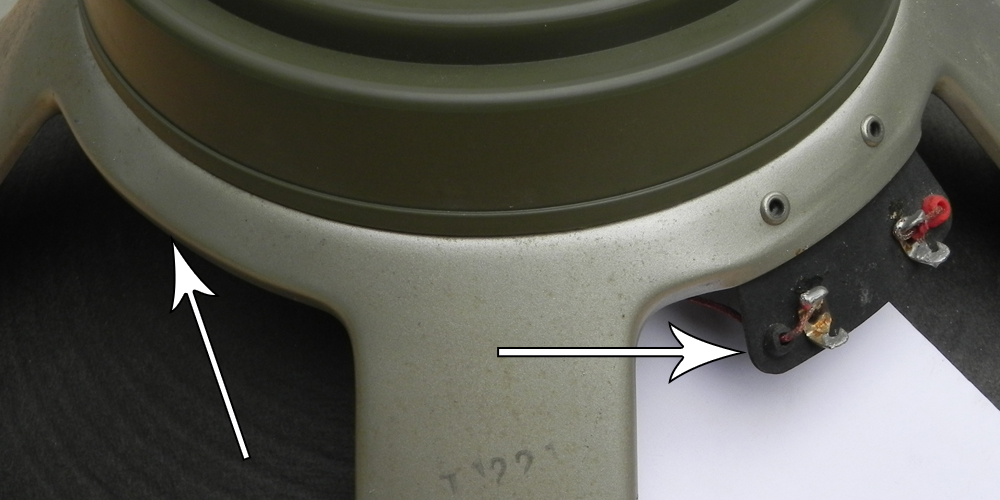
Fake speakers will often have a pre 69 date code on a post 69 chassis!
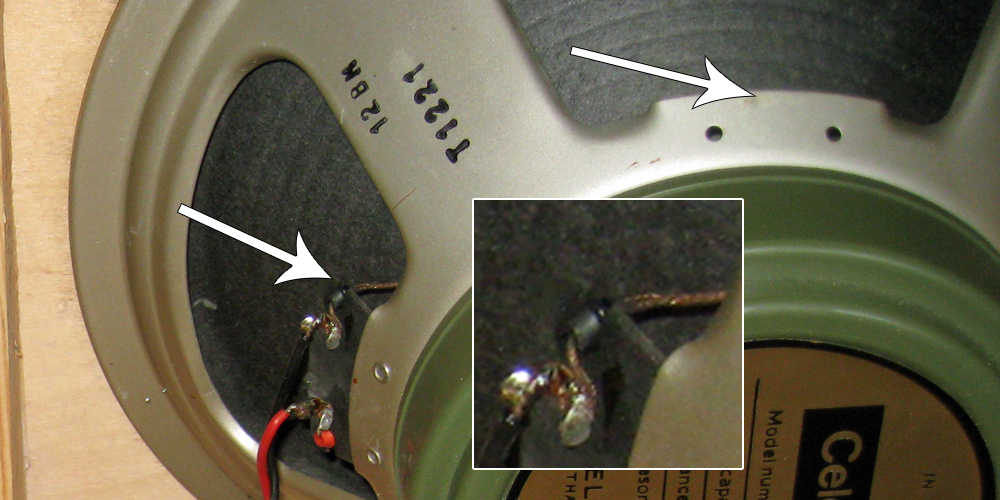
The ‘Marshall T1217’
The T1217 was not a stock speaker used by Marshall to the best of my knowledge. Certainly not in 4×12 cabs anyway. Watch out for the T1217 model speaker with a white Marshall label on the back.
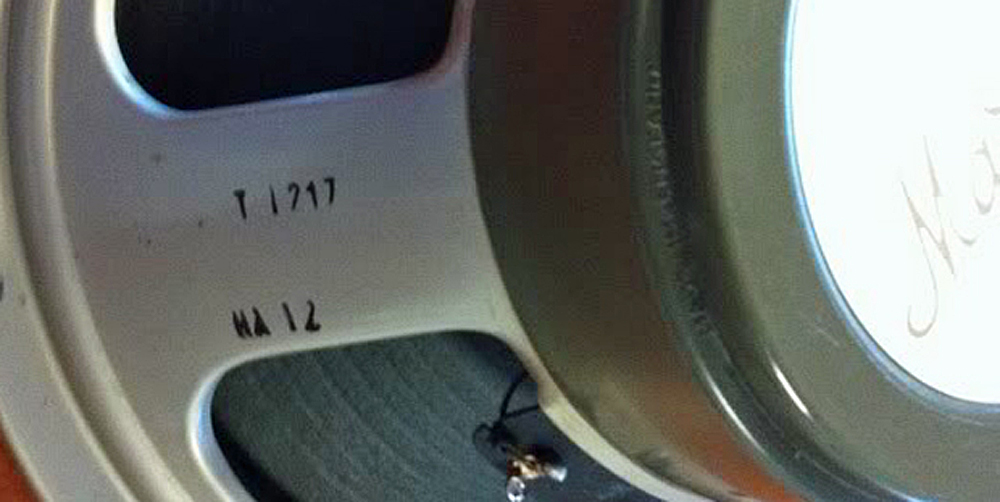
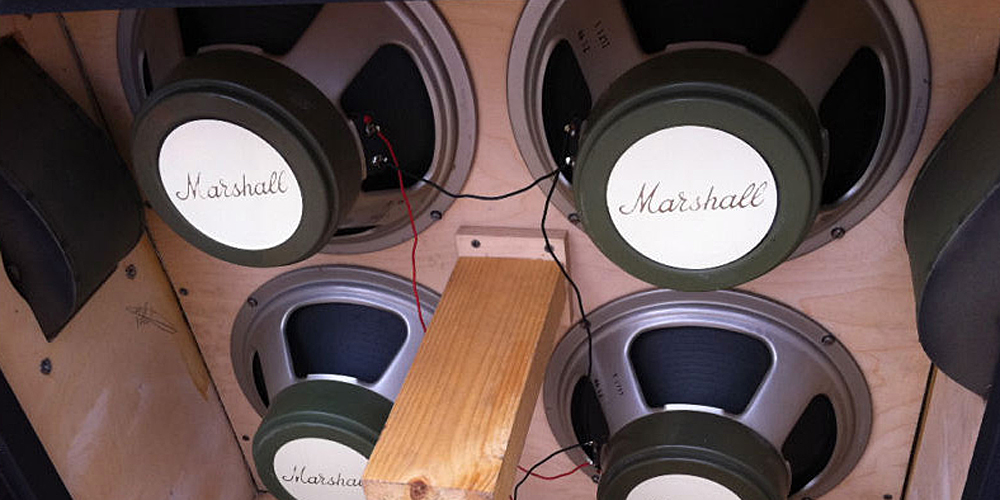
The fake white labels are fairly difficult to differentiate from the genuine ones, but usually the fake ones show very little signs of ageing. The genuine ones can sometimes go a bit yellow and transparent over the years.
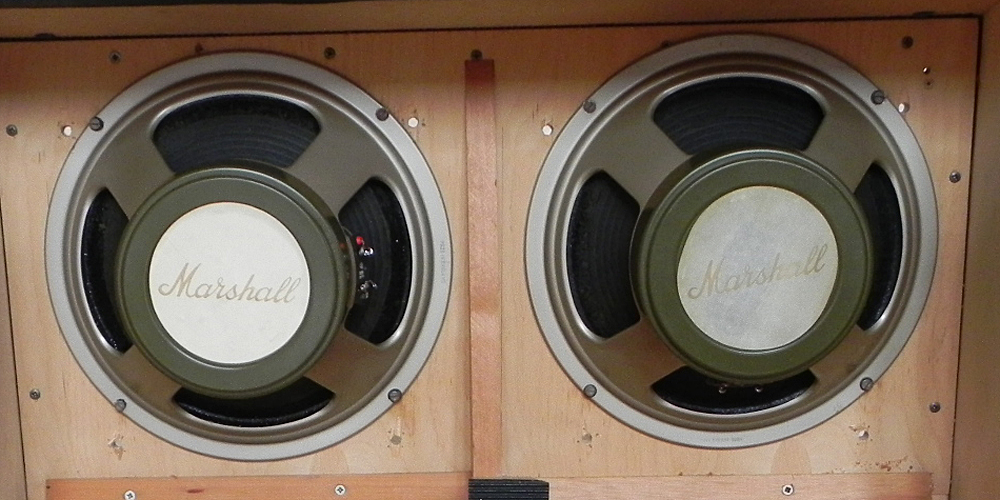
Fake and Repro Labels
If you’ve got a good eye for detail you might spot some of these finer inacurracies on the fake Celestion labels. In particular, notice the impedance.
The 15 Ohm pre-rola labels were standard from 1966 onwards and were phased out from Aug 1968 onwards. These are the 20 watt G12M and 25w G12H labels:
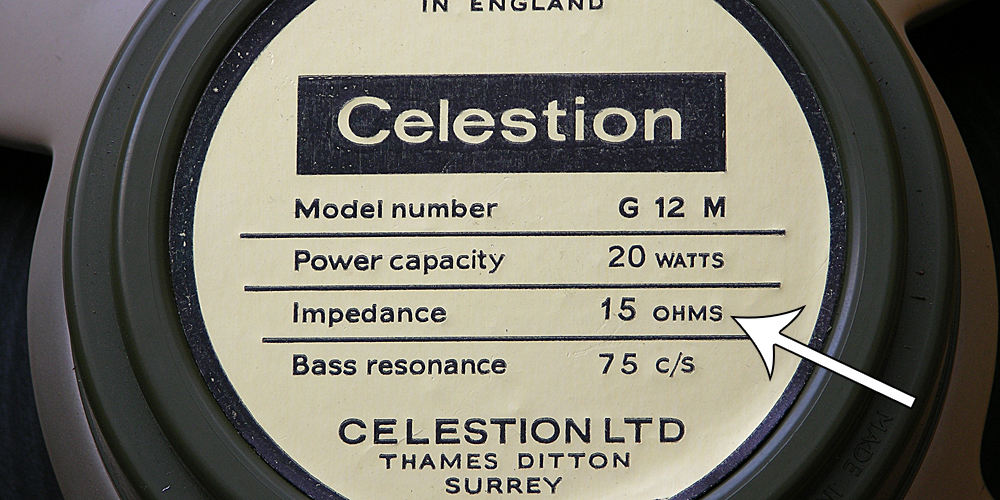
The 16 Ohm pre-rola labels first appear in Aug 1968 and were phased out from April 1971 onwards. These are the 25w G12M and 30w G12H labels:
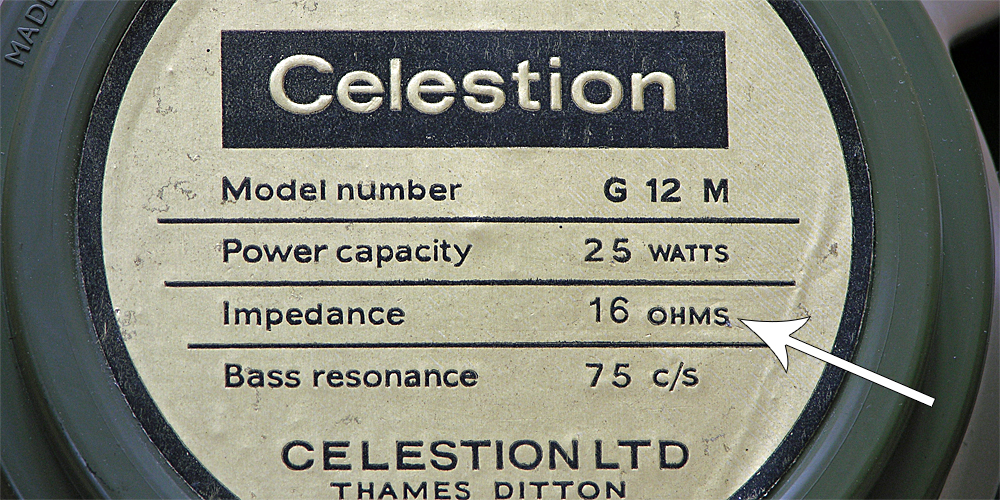
Fake labels will often have the wrong impedance on them:
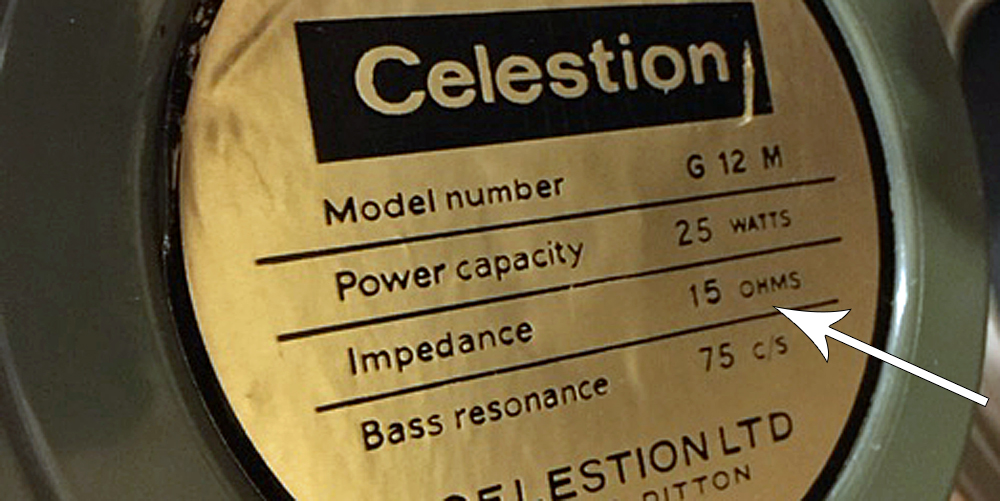
The heritage series labels are easy to identify by their glossy finish. There are also some very obvious repro labels around with a wierd looking sloping font. Notice both of these label types also have the “incorrect” 15 Ohm impedance:
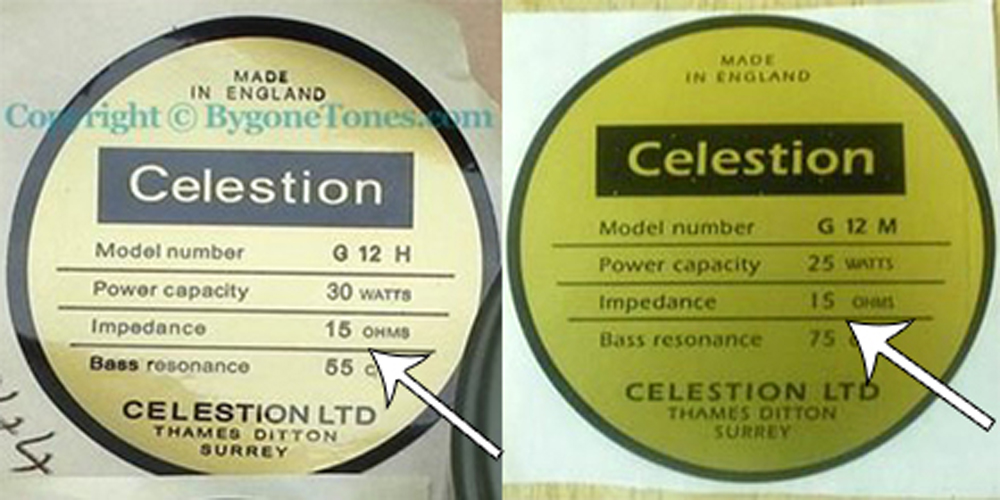
Fake Cone Stamps
Watch out for any peculiar looking cone stamps. Often accompanied by a white smudge – probably an attempt at removing the original cone stamp.
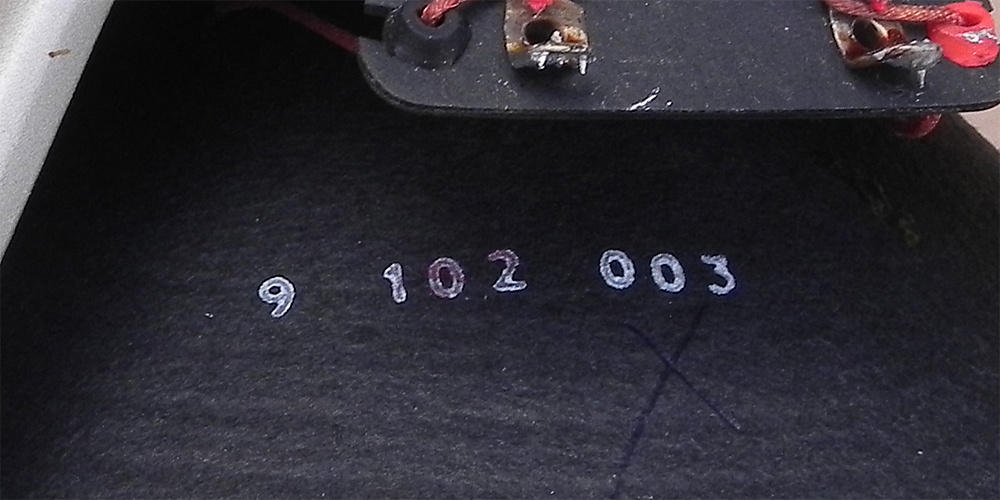
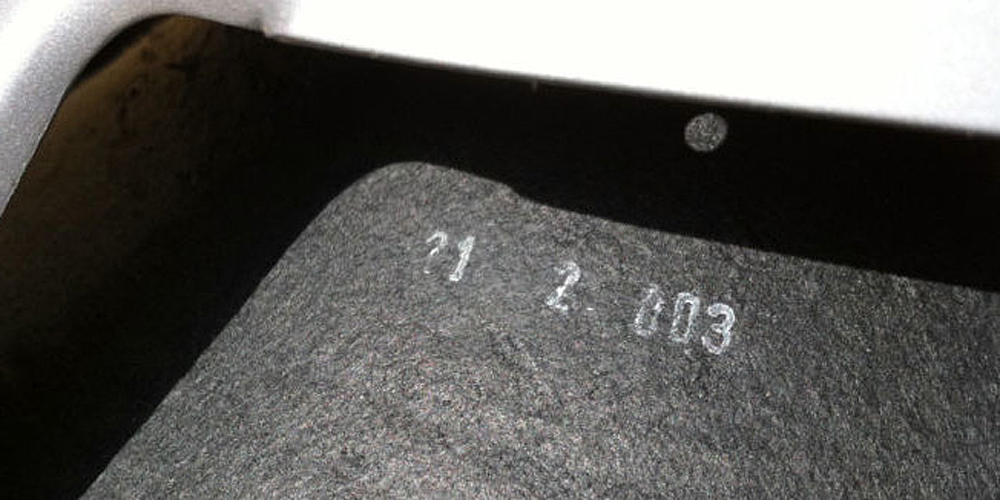
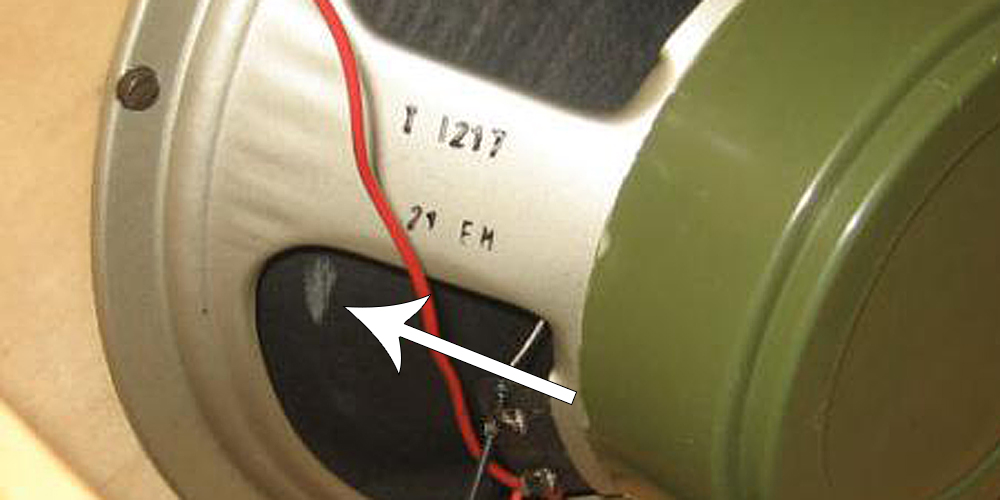
Dont Get Stung
So, hopefully you have picked up a few pointers here. The main thing to look at is the date stamp and the type of chassis – they really stick out like a sore thumb once you know what to look for.
When buying vintage Celestion speakers, and especially vintage Marshall gear, always make sure you do your homework on the item, but more importantly – always research the guy selling it! Stick to the honest dealers, not the ones who have done jail time!

I’m looking at a basket weave. Maybe 69+. The celestions do not have a model or date code. They have an inspection stamp. I have enclose some pics. Have you seen pre rola celestions not to have the date and model stamps? They have the black tap without the cut out. Otherwise, the cab looks correct. large Marshall Logo. Thoughts. I can sent pics.
Author
Hi Vic, yes I’ve seen this before. Possibly left the factory that way, but also the ink stamps possibly cleaned off by previous owners. Email me some pics and I will help you date & authenticate them.
Brian.
Hello Brian,
First of all thank you very much for all this information.
I’m looking into getting a 1935a bascketwave from 1969 with greenbacks G12 M ( serial code GB230 )
All seems ok but on “WRONG CHASSIS & SOLDER TERMINALS”, it has solder terminals on all for sides.
Do you think this is ok?
I can provide you some photos as I would like to have your opinion on this if possible.
Author
Hi Gui, the four tab chassis was used on speakers with GB date codes, that was the first month for them on greenbacks in my experience. regards, Brian.
Hello Brian,
I’ve found 1971 marshal cab ,
One of the speaker is pre rola judging from the cone stamp.
The other 3 have chassis codes DD30t but no cone stamp.
Is it possible they left the factory without stamps, I believe can’t be the case 3 of those to be reckoned.
Author
Hi Jovan, it would be unusual for pre-rolas to have no cone stamp, especially 3 in the same cab. The stamps can often be high up on the cone, near the center of the voice coil, making them hard to see. You might need a mirror to see them, or poke your phone in there to see if the camera picks it up. Otherwise, it could well be that they are recones yes. You really need to remove the speakers from the cab and get a proper look at them to assess that. Hope that helps, Brian.